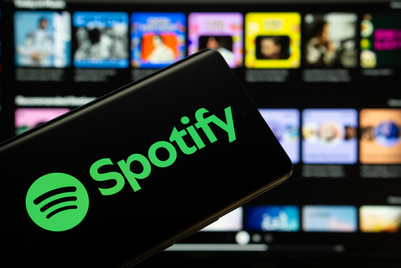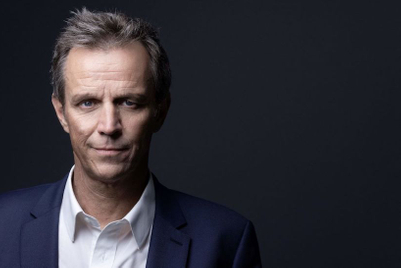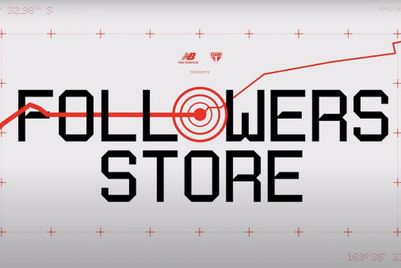
The battle for digital advertising budgets is widening beyond social and video. Last October, Spotify entered a global partnership with The Trade Desk, piloting its own supply-side platform—Spotify Ad Exchange (SAX).
The move signals Spotify’s ambition to compete not just as a music streamer but as a programmatic marketplace, offering brands access to logged-in, high-intent audiences at scale. Its new AI-driven creative tools are designed to smooth out one of audio advertising’s biggest pain points—production bottlenecks that often deter small and medium-sized businesses. Alongside this, upgraded analytics now allow marketers to measure Spotify’s returns with the same precision they use for social media and digital video.
The tie-up also aims to streamline buying across audio, video and podcasts, while anchoring identity and transparency through The Trade Desk’s tools. This fills a gap that has long limited audio’s role in media mix models. For marketers, the bet is that programmatic audio—long overshadowed by video—can emerge as a credible channel ahead of India’s critical festive season.
Globally, Spotify’s advertising revenue crossed $2.1 billion in 2024, up 13% year-on-year, according to WARC. This marked six consecutive quarters of double-digit growth, fuelled by podcast demand and video expansion.
Arjun Kolady, head of India sales at Spotify told Campaign that the company has already grown its monthly active advertisers by “more than 40% year-over-year,” with automated sales channels driving the bulk of gains.
Spotify’s push into automation
For Spotify, simplifying access is only one part of the equation. The company has been steadily evolving its Ads Manager, layering on advanced targeting, new measurement solutions and outcome-based objectives.
“With Spotify Gen AI Ads, we’re bringing our AI expertise to our advertising partners to enable them to create scripts and voiceovers at no additional cost, making it easier than ever to create high-quality, scalable audio ads,” said Kolady.

He highlighted early adoption, stating that nearly 1,500 advertisers have leveraged the tool to quickly create and launch more than 7K effective and scalable audio ads tailor-made for the audio streaming platform.
“On average it takes advertisers 17 minutes to go from start to saving an AI Ad. However, 50% of advertisers do this in under 9 minutes,” he elaborated. By lowering production barriers, Spotify hopes to draw more small and medium-sized businesses into its ad ecosystem—segments traditionally priced out of premium audio.
At its Spotify Advance event in April 2025, the company announced the formal rollout of SAX across multiple markets, including India. Advertisers can now access Spotify audiences through real-time auctions with addressability and measurement built in.
The platform has since enabled programmatic podcast buying, giving agencies access to nearly 170 million monthly podcast listeners and 7 million podcast titles worldwide. “As podcasts continue growing on the platform, this latest update simplifies how advertisers can tap into our engaged audience,” Kolady stated.
SAX first integrated with The Trade Desk’s DSP, followed by Google’s Display & Video 360 and Magnite. More demand-side partners are expected. “Given this, we’ll continue to invest in our automated channels to give advertisers the flexibility and control to buy in whatever way works best for them,” he said.
UID2: A new spine for identity
At the centre of the Spotify and The Trade Desk collaboration is Unified ID 2.0 (UID2), an identity framework designed for a post-cookie world. “UID 2.0 helps advertisers solve one of their toughest challenges today: maintaining effective targeting in an era of signal loss. Built on hashed email and user consent, it provides a durable, cross-device identity signal, something third-party cookies were never designed to deliver,” said Rahul Kapoor, vice president—partnerships, The Trade Desk India.
He argued UID2 is “particularly valuable in logged-in environments like Spotify, where authenticated identity is already the norm. Even with only partial authentication, UID2 enables brands to scale their reach through modelled audiences, bridging the gap between precision and performance.”
In India, UID2 is already being applied to CRM onboarding, lookalike modelling, and cross-device frequency management. These are the very functions that marketers previously struggled with at scale.
Because of its interoperability, the framework interconnects with other IDs such as RampID. This makes data activation possible across the open internet rather than being siloed.
OpenPath and supply chain simplification
Alongside identity, the partnership leans on OpenPath, The Trade Desk’s direct-to-publisher access channel. The tool cuts intermediaries, aiming for lower bid latency, higher match rates and sharper CPMs.
“Advertisers can now access Spotify’s suite of audio, video, and display formats across music and podcasts via The Trade Desk, gaining greater control, transparency, and operational efficiency,” Kapoor noted.

He pointed to international case studies: The Guardian Australia saw a 91% lift in programmatic revenue after adopting OpenPath, while the New York Post reported an 8.6x higher fill rate and a 97% jump in revenue compared with other supply routes.
“These outcomes demonstrate the tangible upside of supply chain simplification. And in a value-conscious market like India, where every rupee of media spend counts, that efficiency is especially critical,” he said.
The walled garden comparison
The bigger question is whether Spotify can position itself alongside Google and Meta as a must-buy environment. By launching SAX, the company is effectively mirroring the direct exchange model of the tech giants, but leaning on logged-in, authenticated audiences as its differentiator.
“Crucially, Spotify also gives marketers what walled gardens can’t: transparency, control, and addressability at scale across the premium open internet,” Kapoor argued. With UID2 adoption expanding to publishers such as Times Internet and NDTV, marketers can design privacy-conscious campaigns that blend open-web and Spotify inventory.
Spotify is also tilting further into video, which is growing faster than audio-only consumption on its platform. In India, video screen time grew 92% year-on-year. “We’ve found that ad campaigns combining audio with video creative leads to a 27% increase in purchase intent, and a 66% increase in incremental sales globally on average,” Kolady said.
India’s programmatic picture
India has embraced automation quickly, as is its wont with most new-age tech. Programmatic accounted for 88% of total ad impressions in 2024, according to TAM AdEx, dwarfing ad networks at 4%. Yet programmatic audio remains a laggard.
Kapoor sees three barriers: production, measurement and budget allocation. The Trade Desk has integrated services like Bunny Studio to offer multi-language, voice-acted audio ads at scale. On measurement, partners such as InMobi Pulse provide brand lift and completion-rate metrics, designed to put audio on par with video or display.
“Lastly, audio is often seen as an afterthought in budget planning. We're actively working with agencies and planners to shift that mindset so audio have a seat at the table from day one,” Kapoor said.
India’s festive season is a proving ground for mixed ad formats. Spotify is positioning premium audio as a channel that combines reach with immersion.
“Unlike platforms where ads are quickly skipped or scrolled past, Spotify offers an immersive, leaned-in experience. And this context matters: our research shows that 86% of listening moments involve moderate to high attention, with 71% of users discovering new brands via audio and 66% recalling audio ads,” Kapoor stated.
Premium audio makes some noise
Studies cited by The Trade Desk suggest audio strengthens omnichannel impact: 3.4x greater connection, 1.9x more immersion, and 2.9x lower cognitive fatigue, according to its Untapped Opportunity in Omnichannel report with PA Consulting.
For brands competing during Diwali or other high-volume periods, the implication is that audio may act as both a reach and attention driver, rather than a secondary channel.
The Spotify–Trade Desk partnership underlines two trends. First, authenticated programmatic buying is becoming central to digital advertising, especially as cookies fade. Second, premium audio is emerging as an under-leveraged channel in India, with the festive season as its test case.
By aligning SAX with UID2 and OpenPath, Spotify is betting that advertisers will value identity, transparency and automation as much as reach. The Trade Desk frames its role as cutting inefficiency from the supply chain. Both argue that logged-in audiences, delivered programmatically, represent a premium alternative to the existing walled gardens.
Whether marketers shift meaningful budgets into programmatic audio remains to be seen. But with festive ad volumes about to spike, the test of attention versus clutter could determine whether audio finally earns its place as a front-line channel in Indian media plans.


.jpg&h=334&w=500&q=100&v=20250320&c=1)

.jpg&h=334&w=500&q=100&v=20250320&c=1)
.jpg&h=334&w=500&q=100&v=20250320&c=1)


.jpg&h=334&w=500&q=100&v=20250320&c=1)
.jpg&h=334&w=500&q=100&v=20250320&c=1)




.png&h=268&w=401&q=100&v=20250320&c=1)


.jpg&h=268&w=401&q=100&v=20250320&c=1)
.jpg&h=268&w=401&q=100&v=20250320&c=1)

